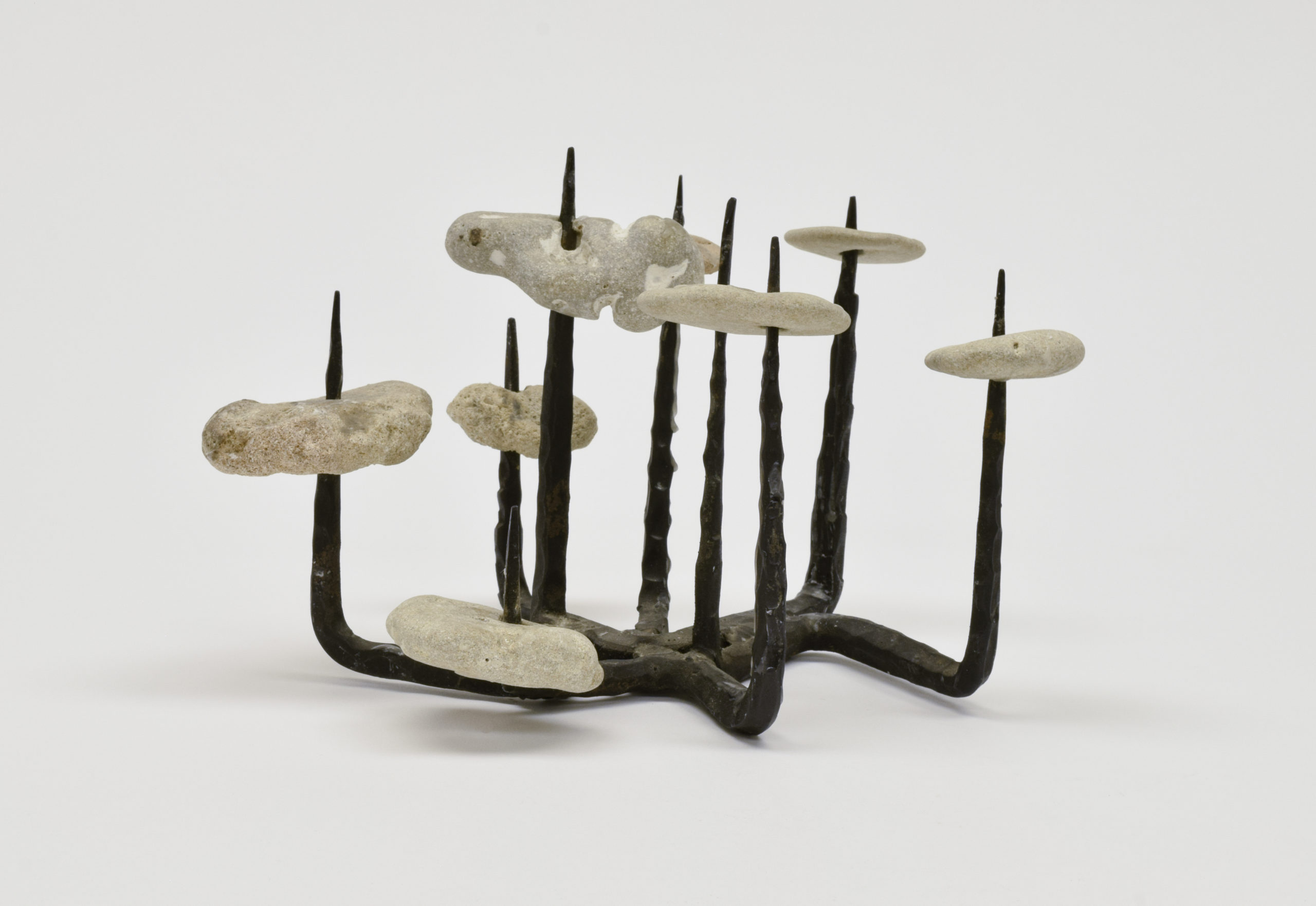Hanukkiyah (Hanukkah Menorah)
David Palombo (Turkey 1920-1966 Jerusalem)
Israel, ca. 1963
Rock and iron
Cincinnati Skirball Museum, x.2021.1
Hanukkah, a joyous winter holiday, commemorates the military victory in 165 BCE of a small number of Jews, led by Judah Maccabee, over the ruling Syrian-Greek government. The Jews had been commanded to worship only Greek idols under penalty of death. When the Maccabees reconquered Jerusalem, they found that the Syrians had desecrated the Temple. According to the Talmud, a commentary on the Torah, the Maccabees cleansed and rededicated the Temple by lighting its seven-branched menorah, or candelabrum, with a small amount of oil that remained. Miraculously, the oil, enough for only one day, burned for the eight days of the Festival of Dedication—Hanukkah—in Hebrew. To observe the victory and the miracle, Hanukkah lights are kindled for eight days. A special menorah, called a hanukkiyah, holds nine candles. Since the light may not be used for work or illumination, a shamash, or servant light, is lit first and used to kindle the others. On the first night of Hanukkah, one light is lit, with an additional candle lit on each subsequent night. Traditionally, the lighted Hanukkah lamp is placed near a window in the home. This hanukkiyah is of a unique modern design. The stark, spiky iron elements are warmed by the natural rock forms. Palombo was an immigrant to Israel from Turkey. He studied at the Bezalel Academy of Arts and Design and was a student of the sculptor Ze’ev Ben-Zvi. Palombo later taught at Bezalel. His known works include the gates to the Tent of Remembrance at Yad Vashem and the gates to the Knesset, the Israeli Parliament. Palombo died tragically when his motorcycle crashed into a chain road barrier on Mount Zion outside of Jerusalem.

